Women and Sleep Apnea
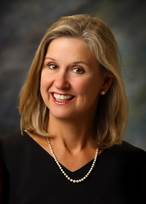
Dr. Barbara Phillips — sleep expert, board member and past chair of the National Sleep Foundation — asked some noted experts about the unique challenges women face in being diagnosed with sleep apnea.
Dr. Phillips: Do you think women with sleep apnea are as likely to be diagnosed as men with sleep apnea are?
Grace W. Pien: On the whole, I believe that women with sleep apnea are less likely to be diagnosed compared to men. In earlier studies of patients coming in for evaluation for sleep apnea, the ratio of men to women has sometimes been extremely lopsided, with 8 or 9 men diagnosed with apnea for each woman found to have obstructive sleep apnea (OSA). However, we know from studies in the general population that the actual ratio is likely to be closer to 2 or 3 men with OSA for each woman who has the condition.
Nancy A. Collop: My bias is they are not, although I think this is improving as the numbers in our sleep center suggest that women make up about 45 percent of sleep study referrals and most sleep studies are still done to screen for sleep apnea.
Dr. Phillips: Why do you think women are less likely to be diagnosed with sleep apnea?
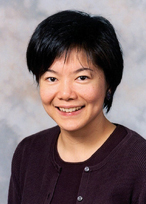
MD, MS
Dr. Pien: Although there is greater awareness now that sleep apnea is also quite common in women, there are probably several reasons that women may be less likely to be diagnosed and treated for sleep apnea. First, physicians often have a predefined notion of the type of patient who has sleep apnea, like a middle-aged overweight or obese male. Thus, they may not think of this diagnosis when the patient is female. Second, women may present with slightly different symptoms than the "classic" symptoms of snoring, witnessed breathing pauses at night and excessive sleepiness during the day — not a surprise, when one realizes that these classic symptoms were described in nearly all-male populations! Instead, women may present with fatigue, insomnia, morning headaches, mood disturbances or other symptoms that may suggest reasons other than OSA for their symptoms.
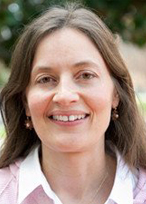
PhD
Fiona C. Baker: Women are more likely to present to their clinician with non-specific symptoms such as insomnia (difficulty falling asleep or staying asleep), restless legs, depression, lack of energy, and sleepiness. Because these symptoms are not specific for OSA, women may be misdiagnosed and are less likely to be referred to a sleep clinic for further evaluation.
Anita L. Blosser: Keep in mind that we usually have 15 minutes with a patient. Since there is no quick and easy way to tease out the differential, and all of these conditions are more or less vague (that is, no hard physical or lab finding, with the exception of anemia), we may have to make a decision and offer treatment too soon. Many female patients would rather leave my office with a prescription for a pill than with an order for a sleep study. Men are less likely to have anemia or more than one job, full care of children and the home. There are a lot of depressed men, in my experience, but they would rather have a sleep study than a prescription for antidepressants. (Unfortunately, the males are also less likely, in my experience, to comply with CPAP (continuous positive airway pressure)).
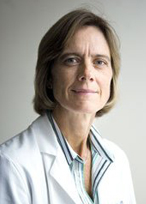
MD
Dr. Collop: Studies have shown that women tend to have different types of complaints than their male OSA counterparts with more insomnia, disrupted sleep, chronic fatigue and depression. Since these aren't the classic symptoms of sleep apnea - these symptoms are often put off to being something else. Also, I think women are more "vigilant" sleepers and are more likely to worry about their bed-partners sleep, whereas men are more sound sleepers and may be less likely to note abnormal sleep in their bed-partner.
Dr. Phillips: Another problem is that women with sleep apnea have more subtle breathing disturbances and are more likely to have REM-related apneas, so they may be tougher to diagnose. And physicians do not have as high an index of suspicion for sleep apnea in women as they do in men.
Dr. Phillips: Does the relationship between OSA and hypertension differ between men and women?
Dr. Baker: Obstructive sleep apnea is a significant risk factor for heart disease. The prevalence of hypertension in people with sleep apnea ranges between 30-70 percent and is similar in men and women. However, when taking body mass index (BMI) into consideration, some gender differences emerge: men with OSA who are markedly obese (BMI > 37 kg.m-2) have a two-fold higher risk of hypertension than obese women with OSA.
Dr. Phillips: Does the relationship between OSA and diabetes differ between men and women?
Dr. Collop: Women with OSA tend to be more obese and have lower AHI (Apnea-Hyponea Index, an index used to assess the severity of sleep apnea) than males; however, studies have also suggested that women may have a higher mortality.
Dr. Baker: OSA is associated with an increased risk for the development of type 2 diabetes independent of obesity. There is limited research about the modifying effect of gender on this relationship; however, it appears that habitual snoring and self-reported apneic events are associated with increased risk for diabetes in both men and women.
Dr. Phillips: What symptoms, signs or diseases should prompt a woman or her doctor to consider that she might have OSA?
Dr. Blosser: Fatigue, obesity, history of snoring, dry mouth on awakening, a sense of being overwhelmed. Any of these should at least get you a neck girth measurement and some close questioning.
Dr. Pien: Women may experience daytime fatigue, lack of energy or excessive sleepiness despite getting an adequate amount of sleep (usually 7-8 hours) at night. They may notice headaches when they first awaken. Their bed partner may report that they have heavy snoring, or that they have breathing pauses during their sleep and make choking sounds sometimes with these. Women themselves may notice that they have frequent unexplained awakenings at night, awaken frequently to urinate, or sometimes awaken from sleep at night feeling as if they are gasping or choking.
We also know that women's risk for sleep apnea increases as they transition through menopause, so that post-menopausal women are up to three times more likely to have OSA compared to premenopausal women. Also, women who are overweight and obese are at greater risk for having sleep apnea. Women who have high blood pressure that is difficult to control despite taking medication and have some of these symptoms may also wish to be evaluated for sleep apnea, as diagnosis and treatment of OSA can help with blood pressure control.
Dr. Collop: Difficulty maintaining sleep, un-refreshing sleep, chronic fatigue, lack of energy, snoring, frequent nighttime urination, awakening gasping, daytime sleepiness, awakening with a headache, or edema (swelling) of the feet.
Dr. Baker: Women who are obese, pregnant women, and post-menopausal women all have a greater risk for OSA. Finally, women with the endocrine disorder, polycystic ovary syndrome, are more likely to have sleep apnea even after controlling for weight and should seek clinical evaluation.
Dr. Phillips: The "classic" symptoms are snoring, witnessed apneas (pauses in breathing), and daytime sleepiness, but women may not experience these things. Weight gain, depression, waking up gasping for breath, hypertension, and dry throat in the morning may be tip-offs for women that they may need an evaluation.
Common Sleep Apnea Misdiagnoses
Women are often diagnosed in error with one of the following conditions, rather than sleep apnea.
- Anemia
- Cardiac or pulmonary illnesses
- Depression
- Diabetes
- Fatigue from overwork
- Fibromyalgia
- Hypertension
- Hypochondria
- Hypothyroidism
- Insomnia
- Menopausal changes
- Obesity
Grace W. Pien, MD, MS, assistant professor of medicine, divisions of Sleep Medicine and Pulmonary and Critical Care at the University of Pennsylvania School of Medicine.
Nancy A. Collop, MD, medical director at Johns Hopkins Hospital Sleep Disorders Center and associate professor of medicine at Hopkins' Division of Pulmonary and Critical Care Medicine in Baltimore, Md.
Fiona C. Baker, PhD, sleep physiologist at the Center for Health Sciences, SRI International, in Menlo Park, Calif.
Anita L. Blosser, MD, with Duke Primary Care at the Henderson Family Medicine Clinic in Henderson, N.C.
Learn more about how these medical devices can make a big difference in nighttime comfort for people with breathing issues.Sleep Apnea is a sleep disorder in which breathing is briefly and repeatedly interrupted during sleep. Learn how to cope with this sleep-related breathing disorder.A frequent need to get up and go to the bathroom to urinate at night is called nocturia. It differs...Nearly one-quarter of all workers have shifts that are not during the daytime, and more than two-thirds of these workers...You don't have to struggle with sleepless nights. Help is available! There are treatment options for insomnia, ranging from behavioral...How you feel about the sleep you get every night is known as sleep satisfaction. Unlike sleep quantity (which objectively...Taking care of an infant is tiring work, and falling asleep whenever the opportunity arises seems like it should be...Lack of sleep typically takes the blame for exhaustion, and if you’re logging less than seven hours of shut-eye each...Everyone dreads those long nights of tossing and turning when sleep just doesn’t seem to come. The issue is more...For people juggling family, work, and a personal life, feeling exhausted may seem like it’s just par for the course....
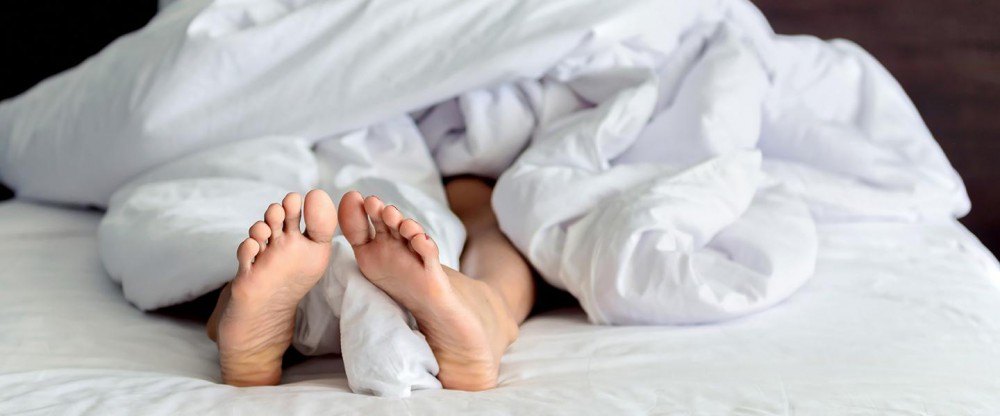
Source: Internet





